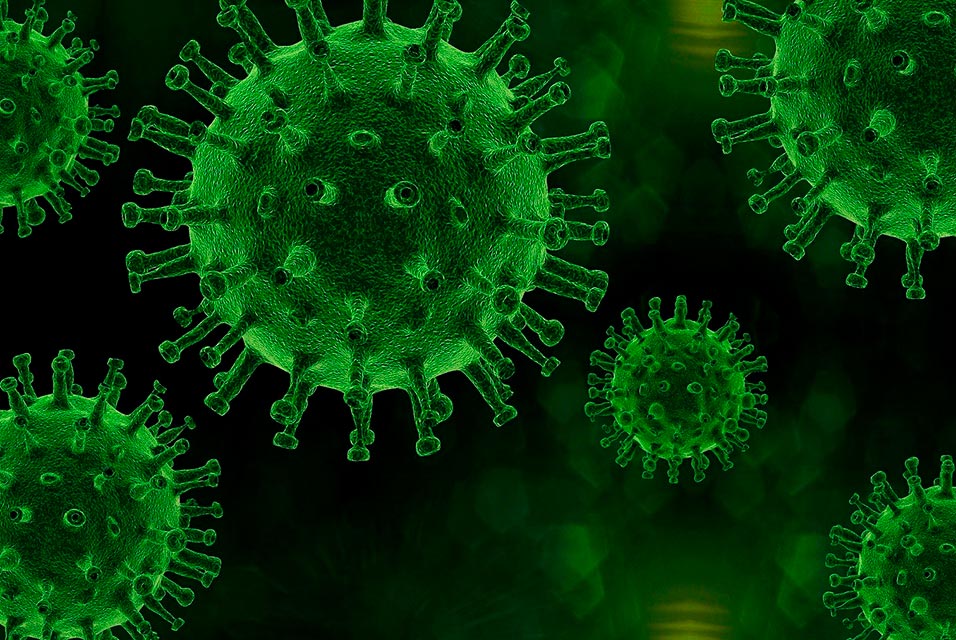CHICAGO, IL.- Multiple tissues of the male genital tract can be infected with SARS-CoV-2, reports a new
Northwestern Medicine study in large animal models. The study, in SARS-CoV-2 infected-rhesus macaques, revealed the prostate, vasculature of testicles, penis and testicles were all infected with the virus.
The surprising discovery was made utilizing a PET scan specially designed to reveal sites of infection spreading over time in a whole-body scan. Scientists didn’t know what they would find, but they expected to see the virus in the lungs and high up in the nose near the brain because people were experiencing loss of taste and smell.
“But the signal that jumped out at us was the complete spread through the male genital tract,” Hope said. “We had no idea we would find it there.”
“These results indicate that the testicular pain, erectile dysfunction, hypogonadism, reduced sperm count and quality, and decreased fertility associated with SARS-CoV-2 infection are a direct consequence of infection of cells of the male reproductive tract and not indirect mechanisms such as fever and inflammation,” said lead investigator Thomas Hope, professor of cell and developmental biology at Northwestern University Feinberg School of Medicine.
The evidence that infection with SARS-CoV-2 can negatively impact male sexual health and fertility is increasing every day. But scientists didn’t know the reason and wondered if the cause was fever and inflammation.
“We just didn’t understand why it had this negative impact until this study,” Hope said. He noted viruses such as mumps, Ebola, Zika, SARS-COV-1 and other viruses also can infect tissues of the male genital tract and negatively impact fertility. Mumps infection is well known to potentially cause male sterility.
The new study shows how the virus can cause pathology in the prostate, penis, testicles and testicular vasculature (blood vessels), Hope said.
The study is posted as a preprint on bioRxiv, meaning it should be considered preliminary research until it is published in a peer-reviewed journal.
“Even if this is only a small percentage of the infected, it represents millions of men who may suffer from a negative impact on their sexual health and fertility,” Hope said.
Clinical studies suggest 10% to 20% of SARS-CoV-2-infected men have symptoms related to male genital tract dysfunction. This suggests tens of millions of men who have been infected with SARS-CoV-2, especially those who had severe COVID-19, should evaluate their sexual health and fertility to determine if additional therapies could prevent or diminish future problems, Hope said.
“The potential impact of SARS-CoV-2 infection on sexual and reproductive health should be part of everyone’s decision to get vaccinated to minimize the chance of death, severe disease and hospitalization, and infection of the prostate, penis, testicles and vasculature (blood supply) of testicles,” Hope said.
This is the first PET (positron emission tomography) probe shown to be able to identify the sites of SARS-CoV-2 infection in a living animal, the study authors said.
“This approach allows the sequential scanning of the same animal, which defines the progression of virus dissemination and time before the virus is purged from the body,” Hope said. “It also has the potential to increase our understanding of long COVID and the development of novel therapies targeting different long COVID comorbidities.”
How the study worked
Early development of a fluorescently labeled version of the antibody-derived probe suggested a radioactive version of the probe would reveal the anatomical distribution of SARS-CoV-2 infection after a PET scan.
The observation of SARS-CoV-2 infection of the different tissues of the male genital tract emerges from a new system designed to use a PET scan to detect sites of SARS-CoV-2 infection in a rhesus macaque. The identification of the rhesus macaque as a major and reproducible site of SARS-CoV-2 infection was unexpected and has pathological characteristics consistent with the pathology of testicles of victims of SARS-CoV-2 infection.
Future research by Hope’s lab will:
• Examine male genital tract infection at later timepoints
• Determine if testicles are a reservoir for SARS-CoV-2 infection as has been suggested in literature
• Investigate if SARS-CoV-2 infects tissues of the female reproductive system
• Aid in the development of therapies and interventions to mitigate the impact of the COVID-19 pandemic on male fertility
• Goal to eventually do PET scan on patients to determine the location of the virus and the best the course of care
Other Northwestern authors include Patrick Madden, Yanique Thomas, Sadia Samer, Mark Becker, Muhammad Arif, Michael McRaven, Ann Carias, Elena Martinelli, Judd Hultquist, Lacy Simons and Ramon Lorenzo-Redondo.
This research was funded by a “Notice of Special Interest” supplement for National Institute of Allergy and Infectious Diseases (of the National Institutes of Health) grant R37AI094595 for SARS-CoV-2 related studies.









